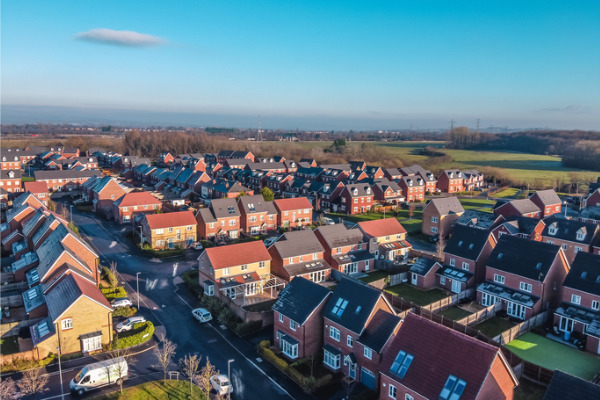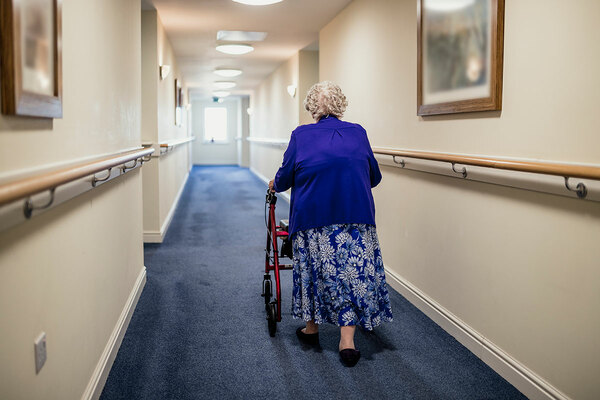You are viewing 1 of your 1 free articles
London HAs’ £3.6bn fire safety costs impact development plans
London-based housing associations have cut thousands of new homes from their development pipelines as they face £3.6bn in building safety costs in the wake of the Grenfell Tower fire.
London-based Optivo cut 2,000 new homes from the 4,500-home target it had planned between March 2020 and April 2023. The 45,000-home landlord said that, of those lost, 85% would have been affordable.
L&Q, which owns and manages 105,000 homes, estimates its total building safety costs will reach £450m, the equivalent of 10,000 homes.
The landlord said that 50% of those homes would have been for social rent, with the remaining a mix of affordable and market rent or sale.
L&Q told Inside Housing in March that it would see its yearly housebuilding target of 10,000 homes cut to just 3,000 over the next five years as it copes with escalating fire safety costs.
Decarbonisation costs and upgrades are also impacting development plans. If funding is not made available, this equates to a loss of 70% of new homes.
Catalyst, which owns and manages 34,000 homes, has reduced its 1,300 new homes per year target to about 1,000, but with an “ambition to see 85% of these homes being affordable”.
The UK’s largest housing association, Clarion Housing Group, estimates it will build 1,800 fewer affordable homes over the next five years because of remediation costs, although the provider did not provide an overall development forecast.
The figures covering London associations come as a new survey of 106 housing associations by the National Housing Federation (NHF) found that the impact of safety costs mean that more than one in 10 new affordable homes planned by housing associations across England can no longer be built.
The government has so far allocated £5bn of funding to cover the costs of remediation work for leaseholders and shared owners to remove dangerous cladding from high-rise buildings, but no funding was made available for blocks where social tenants live or for works needed beyond cladding.
Those surveyed by the NHF said that social rent homes will be the worst affected tenure because associations build the majority of that tenure with their own income, rather than with government grants.
The NHF’s research also found that mounting building safety costs are affecting housing associations’ ability to invest in the upkeep of the homes they already own.
Contrary to the NHF’s survey, Paul Hackett, chief executive of Optivo, told Inside Housing that affordable homes would likely be prioritised over market sale for development.
What housing associations are calling for
Mr Hackett said the “first thing” the government should do is “provide non-repayable grant funding for lease holders in buildings below 18 metres”.
He added that it would be “helpful for government to provide funding for rented housing as well because at the moment funding is only available for leaseholders”.
Ian McDermott, chief executive of Catalyst, said: “The costs associated with building safety are extremely high and if we’re doing what we must do – prioritising that – then of course that will have some impact on our ability to build homes.”
He said support from the government in terms of funding and building regulation would be welcome.
“Clarity in terms of what we need to do and support in terms of the costs associated with that will all help us to maintain our development programmes,” Mr McDermott said.
Fiona Fletcher-Smith, chief executive at L&Q, said as a not-for-profit organisation, it “cannot shoulder the full costs of this work”.
She said: “We welcome the government’s support to date but would welcome further support to protect leaseholders and housing associations.
“This would allow us to build more desperately needed social homes.”
Rob Lane, chief property officer at Clarion, said: “We are making strong progress in our building safety programme and are doing all we can to protect our leaseholders from associated costs, but broadening the financial support available would significantly ease the burden and would allow housing associations to redeploy their budgets and scale up delivery of desperately needed new homes.”
G15 members have spent over £450m in the past two years on building safety works and activity. The £3.6bn is expected to be the total cost burdened by associations by 2036.
Geeta Nanda, chief executive of Metropolitan Thames Valley and chair of the G15, said the safety and well-being of residents is an “absolute priority”.
She said: “Members are currently forecasting to spend £3.6bn by 2036 on building safety works, which is the equivalent to the housing association resource needed to build 72,000 affordable homes.
“We are working really hard to continue building the affordable homes that are so desperately needed, but there is undoubtedly going to be an impact on development plans unless the government finds a sustainable way forward on building safety.”
Ms Nanda said protecting leaseholders from costs “has to be the next step”, along with removing VAT from remediation works.
Housing associations across England estimate they will have to spend more than £10bn to make all their buildings safe over the next decade.
The housing sector has urged the government to provide more support and funding to tackle the crisis in the Spending Review, the results of which will be unveiled by the chancellor at the end of the month.
On Wednesday, the NHF asked for all upfront costs for fire safety works to be funded by government on behalf of social housing residents and leaseholders, and to claim the money back from “those responsible, such as private developers and manufacturers”.
A spokesperson for the Department for Levelling up, Housing and Communities, said: “We will not compromise on building safety – building owners must make buildings safe.
“Our £5bn Building Safety Fund is providing support to housing associations facing financial difficulties due to remediation costs, and the new secretary of state is looking afresh at work in this area.
“Additionally, we are investing £12bn to help councils and housing associations provide houses to those in need – the largest investment in affordable housing in a decade.”
Sign up for our daily newsletter
Already have an account? Click here to manage your newsletters










